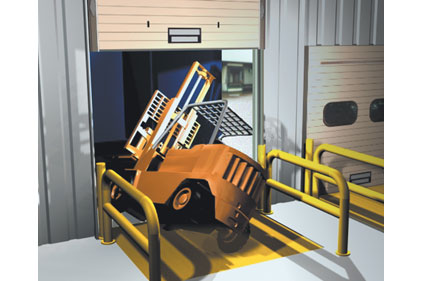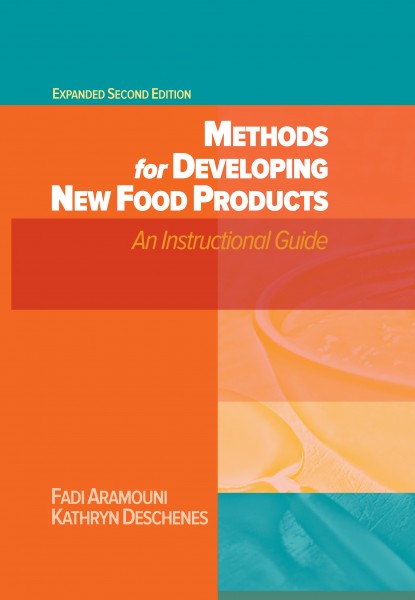 |
|
Loading dock accidents are very common, and many result in deaths, especially when the truck-trailer pulls away before the crew has finished loading. |
Over the past 35 years, there have been more than 500 explosions in US grain handling facilities, killing more than 180 people and injuring over 675, according to OSHA statistics. Grain dust is the main source of fuel for explosions in grain handling. It is highly combustible and can burn or explode if enough becomes airborne or accumulates on a surface and finds an ignition source (such as lightning, a hot bearing, overheated motor, misaligned conveyor belt, heat or sparks from welding, cutting and brazing operations).
However, changes are being made to lessen these risks. Newer grain elevators tend to have an architecture that includes individual feeds, removing the older head house that served as a potential conduit to spread an explosion from one silo to another, says Walter Beattie, Insurance Services senior consulting engineer. Newer grain elevator systems also feature better grounding systems to shunt lightning to ground and minimize static buildup in loading and unloading operations.
Problems with ammonia
It takes a lot of energy to set off an ammonia explosion, and indeed, ammonia explosions/fires are practically unknown, according to Tim Williams, Stellar Interactive Solutions senior project manager. However, a heavy dose of ammonia poisoning can kill an unprotected person within a minute or two.
Anhydrous ammonia is used in closed refrigeration systems. The weakest link in an ammonia system is the maintenance and operation of it, and is largely a matter of training, says Williams. Therefore, processors should not wait for a total breakdown in equipment to repair it.
Most ammonia systems use redundant safety valves on lines and provide safety controls and interlocks for the compressors. Typically, barring a catastrophic event, leaky pipes and/or joints can be quickly located and automatically shut down, explains Williams.
Forklifts and loading docks
With the frenetic pace around loading docks, it’s no wonder accidents happen, and they’re often forklift related. “Preventing workers from being crushed by a forklift or its load is currently done through the use of administrative controls,” says John Peabody, Omron Automation and Safety vice president major accounts. “But administrative controls consisting of personal protective equipment (PPE), warning signs, awareness barriers, process and procedure, and training are the least effective in the hierarchy of safety controls.” Peabody lists in order the three major components of the hierarchy of safety controls as:
1. Eliminating the hazard through design
2. Engineering safety controls
3. Applying administrative control.
Administrative controls are the least effective because they rely on human behavior, says Peabody. For example, these include designated pedestrian walkways, guard rails, visual and audible warnings and training on policies and procedures.
At this time, Peabody claims, camera and vision systems do not increase operator awareness of pedestrian traffic any more than mirrors do. “Today, tightly enforced administrative controls are the only way to reduce the risk of forklift incidents in the warehouse.”
However, the loading dock is one operation where more than administrative controls can be applied, says Peabody, specifically to prevent accidental drive-aways of trailers being loaded. If a trailer (truck) drives off while the trailer is being loaded, the forklift can fall off the dock and end up between the trailer and the dock, potentially resulting in a fatal injury. Trapped-key engineered controls, which don’t rely on human behavior, can ensure a trailer is locked in place before the loading dock door can even be opened. The controls also ensure the loading dock door is closed before the trailer is released.
Lockout/tagout awareness
According to James W. Stanley, FDR Safety president, lockout/tagout is the number one safety issue in the industry simply because of the tremendous amount of machinery in the workplace and the amount of maintenance required to keep it going without losing production.
OSHA requires the hazardous area of machines be guarded to prevent a worker from coming into contact with the hazards, explains Peabody.
The most effective means to reduce risk is elimination. But if a hazard cannot be designed out or eliminated, engineered controls can be very effective when installed and used correctly, says Peabody. Monitoring systems such as safety PLCs, programmable safety controllers and monitoring safety relays are used in medium- to high-risk applications to monitor and maintain a designed safety circuit performance level. Presence-sensing devices can detect a person in the danger zone and send a stop signal to the machine. In the US, high-risk applications require a safety-related control system that is control reliable, meaning it is designed to send a stop signal to the machine even if the system experiences a failure, says Peabody.



